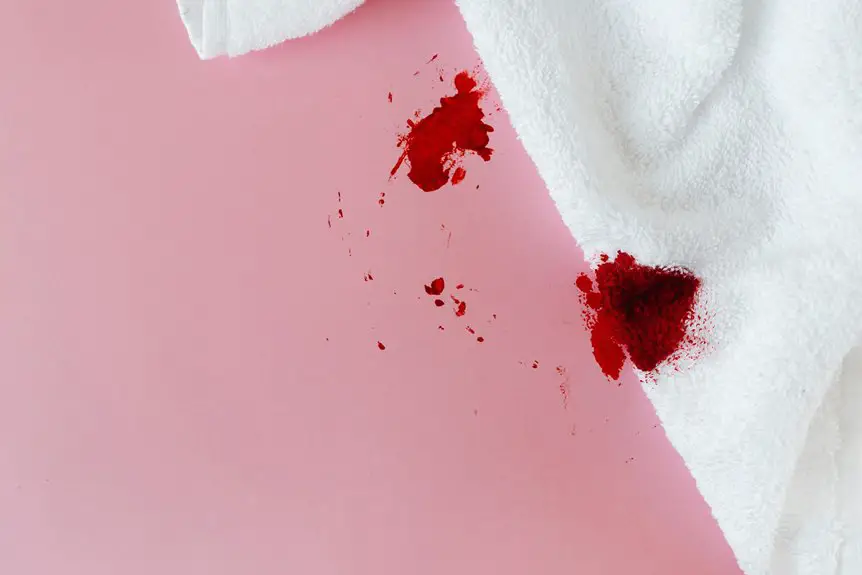You might think quick-drying and moisture-wicking fabrics do the same job, but they actually serve different purposes. Both aim to keep you comfortable, especially during workouts, yet they work in distinct ways. Understanding these differences could change how you choose your gear next time. Let’s explore what sets them apart and why it matters for your performance and comfort.
Table of Contents
Key Takeaways
- Moisture-wicking fabrics pull sweat away from the skin to keep you dry during intense activities, unlike quick-drying fabrics that focus on evaporation speed.
- Quick-drying fabrics rapidly shed moisture and speed drying, ideal for wet conditions, whereas moisture-wicking fabrics manage sweat in real-time.
- Both use synthetic fibers like polyester, but moisture-wicking emphasizes moisture transport, and quick-dry prioritizes rapid evaporation.
- Moisture-wicking is best for high-intensity workouts; quick-drying suits outdoor activities involving water or heavy sweating.
- They serve complementary roles: moisture-wicking moves sweat away, quick-dry speeds drying—choosing depends on your activity and environment.
Understanding Moisture-Wicking Fabrics
Although moisture-wicking fabrics might seem similar to quick-drying materials, they serve a different purpose.
When you wear moisture-wicking fabric, it actively pulls sweat away from your skin through moisture absorption. This keeps you feeling dry and comfortable, especially during intense activities. The fabric’s breathability plays a significant role here; it allows air to circulate, helping moisture evaporate efficiently.
Unlike quick-drying fabrics, which focus on how fast the material dries after being wet, moisture-wicking fabrics prioritize moving sweat away from your body in real-time.
What Defines Quick-Dry Fabrics
You’ll notice quick-dry fabrics are designed to shed moisture fast, speeding up drying time when you’re on the move.
The materials used play a big role in how quickly they dry, with synthetic fibers often leading the pack.
Understanding these traits helps you pick gear that stays comfortable, no matter how intense your activity gets.
Quick-Dry Fabric Traits
When you choose quick-dry fabrics, you’re opting for materials designed to shed moisture rapidly, keeping you comfortable and dry.
These fabrics typically feature synthetic fibers like polyester or nylon, which don’t absorb much water and allow sweat to evaporate fast. Their tight weave and smooth surface help water escape quickly, making them ideal for quick dry applications such as activewear, outdoor gear, and swimwear.
The quick dry advantages include reduced chill from dampness, less weight from retained water, and faster turnaround between uses.
You’ll also notice these fabrics resist staining and dry evenly without clumping.
Drying Speed Importance
Because drying speed directly impacts comfort and usability, it plays an essential role in defining quick-dry fabrics. When you wear clothes that dry fast, you avoid that clammy, uncomfortable feeling after sweating or getting caught in rain.
Drying speed is a key factor in fabric performance, ensuring you stay dry and fresh longer.
Here’s why drying speed matters to you:
- Comfort: Quick-dry fabrics keep you comfortable by reducing moisture buildup.
- Convenience: They let you wash and wear clothes again quickly, perfect for travel or outdoor activities.
- Hygiene: Faster drying limits bacteria growth, preventing odors.
Understanding drying speed helps you choose the right fabric that matches your active lifestyle and keeps you feeling great throughout the day.
Material Composition Effects
Although quick-dry fabrics come in many varieties, their material composition plays an essential role in how fast they shed moisture.
When you choose quick-dry clothing, you’re relying on advanced textile technology that optimizes fabric structure to boost drying speed. Synthetic fibers like polyester or nylon are often engineered with tiny channels or mesh weaves, which help pull moisture away from your skin and disperse it across the fabric’s surface.
This design accelerates evaporation, making the fabric dry quickly. Unlike natural fibers, these synthetics don’t absorb much water, so they won’t stay wet for long.
Understanding these material differences helps you pick the right gear for workouts or outdoor activities where staying dry matters.
Textile technology continuously evolves, improving quick-dry efficiency through smarter fabric structures tailored for performance.
Key Differences Between Moisture-Wicking and Quick-Dry
You’ll notice that moisture-wicking and quick-dry fabrics serve different purposes based on how they handle sweat.
The materials used and their design affect how each performs in various activities.
Understanding these differences helps you choose the best option for your needs.
Functionality Comparison
When you choose between quick-drying and moisture-wicking fabrics, understanding their core functions helps you pick the right gear.
A functionality comparison reveals that while both aim to manage sweat, their approaches differ markedly. Quick-drying fabrics focus on speeding up evaporation, so you won’t stay wet long.
Moisture-wicking fabrics, however, pull sweat away from your skin to keep you dry and comfortable during activity.
Here’s a quick performance analysis:
- Moisture-wicking fabric keeps you feeling dry by moving sweat to the fabric’s surface.
- Quick-drying fabric reduces drying time after you stop sweating or get wet.
- Moisture-wicking is ideal for active use; quick-drying works well for post-activity or wet conditions.
Knowing these differences helps you choose fabric that suits your needs perfectly.
Fabric Composition
Fabric composition plays an essential role in how moisture-wicking and quick-drying fabrics perform. When you look at fabric types, moisture-wicking materials often feature synthetic fibers like polyester or nylon engineered with special textile properties that pull sweat away from your skin.
These fibers have a unique capillary action that moves moisture to the fabric’s surface, helping evaporation. On the other hand, quick-drying fabrics focus more on the material’s ability to shed water rapidly, often using lightweight synthetic blends or treated cotton to speed drying time.
While both rely on synthetic fibers, moisture-wicking fabrics prioritize moisture transport, whereas quick-drying fabrics emphasize fast evaporation through their fiber structure and treatment. Understanding these textile properties helps you choose the right fabric for your activity.
Performance Benefits
Performance benefits clearly separate moisture-wicking and quick-drying fabrics in how they enhance your comfort during physical activities.
Moisture-wicking fabrics pull sweat away from your skin, keeping you dry and reducing chafing, which boosts performance enhancement in high-intensity workouts. Quick-drying fabrics, on the other hand, focus on speeding up evaporation once moisture is present, making them ideal for activities where you might get wet, like hiking or water sports.
Here’s how they differ in activity suitability:
- Moisture-wicking: Best for intense, sweat-heavy workouts like running or cycling.
- Quick-drying: Perfect for outdoor adventures involving water exposure.
- Combined fabrics: Offer balanced comfort when you need both sweat management and fast drying.
Knowing these benefits helps you pick the right gear for your activity and stay comfortable.
Common Materials Used in Both Fabric Types
Although quick-drying and moisture-wicking fabrics serve different purposes, you’ll find that they often share similar materials.
Both commonly use polyester fibers and nylon blends, which are lightweight and durable. Polyester fibers help pull moisture away from your skin, making them ideal for moisture-wicking fabrics.
Polyester fibers pull moisture away from skin, making them perfect for moisture-wicking, while nylon blends add durability and lightness.
Meanwhile, nylon blends contribute to quick-drying properties by allowing water to evaporate faster. These synthetic fibers are engineered to enhance performance, whether you’re aiming to stay dry or cool.
You might notice many athletic wear and outdoor gear use these materials because they strike a balance between comfort and efficiency.
How These Fabrics Enhance Comfort and Performance
By combining materials like polyester and nylon blends, these fabrics don’t just share components—they actively work to keep you comfortable during physical activity.
Their design focuses on comfort enhancement and performance improvement, ensuring you stay dry and agile. Moisture-wicking fabrics pull sweat away from your skin, preventing dampness and irritation, while quick-drying fabrics speed up evaporation to keep you feeling fresh.
Here’s how they enhance your experience:
- Maintain ideal body temperature by managing moisture efficiently
- Reduce chafing and discomfort through breathable, lightweight construction
- Boost endurance and focus by minimizing distractions caused by sweat
These features make a real difference, letting you perform at your best without the hassle of soggy, clingy clothing.
Caring for Moisture-Wicking and Quick-Dry Fabrics
Since moisture-wicking and quick-dry fabrics rely on their special properties to keep you comfortable, you’ll want to care for them properly to maintain their effectiveness. Proper fabric care includes following specific washing tips like using cold water and mild detergent, avoiding fabric softeners that can clog fibers. For drying methods, air drying is best, but if you use a dryer, choose a low heat setting. Storage practices matter too—store these fabrics in a cool, dry place to prevent damage.
| Aspect | Recommendation |
|---|---|
| Washing Tips | Cold water, mild detergent |
| Drying Methods | Air dry or low heat dryer |
| Storage Practices | Cool, dry place |
These steps help preserve the fabrics’ performance over time.
Choosing the Right Fabric for Your Activity
How do you pick the right fabric for your activity? Consider fabric selection tips that match activity suitability to stay comfortable and perform your best.
Quick-drying fabrics are excellent when you expect to get wet or sweat heavily, while moisture-wicking materials help keep sweat off your skin during intense workouts.
Here are some pointers to guide you:
- For high-intensity sports, choose moisture-wicking fabrics to keep you dry and prevent chafing.
- If you’re hiking or swimming, quick-drying fabrics reduce discomfort by drying fast after water exposure.
- For casual wear or low-activity days, a blend of both fabrics can balance comfort and dryness.
Frequently Asked Questions
Can Moisture-Wicking Fabrics Cause Skin Irritation?
Imagine your skin as a delicate flower; moisture-wicking fabrics can sometimes irritate if you have skin sensitivity or harsh fabric composition. Choosing soft, natural blends helps prevent itching and keeps your skin happy during workouts.
Are Quick-Dry Fabrics Environmentally Friendly?
You might find quick-dry fabrics vary in eco friendliness. Choosing options made from sustainable materials and eco friendly innovations helps you support the planet while staying dry faster, reducing water waste during washing.
How Do These Fabrics Perform in Cold Weather?
When it’s cold, you know “a stitch in time saves nine.” These fabrics’ cold weather performance varies; quick-drying might lose fabric insulation, while moisture-wicking keeps you dry, helping maintain warmth and comfort during chilly conditions.
Can Moisture-Wicking Fabrics Prevent Odor Completely?
You can’t expect moisture-wicking fabrics to prevent odor completely since odor retention factors vary. The fabric composition impacts how well they manage bacteria and sweat, so some odor might still develop after intense activity.
Are There Any Health Benefits From Wearing These Fabrics?
You’ll enjoy health benefits like reduced skin irritation and better breathability when wearing these fabrics. Their fabric comfort helps prevent chafing and keeps your skin dry, promoting overall skin health during activities.
- The Use of Nonwovens in Construction and Civil Engineering - July 11, 2025
- The Use of Nonwovens in Construction and Civil Engineering - July 11, 2025
- The Use of Nonwovens in Construction and Civil Engineering - July 11, 2025







